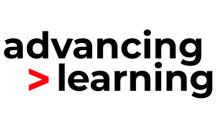Projects have many uses in education. Planning and setting project-based learning experiences that are at the precise time in a child’s learning incorporates many valuable aspects of learning methods and strategies. Project based learning lends itself perfectly to blended learning. Students can use the projects set by teachers to engage in many different types of blended learning including project-based learning and also remote or enriched virtual learning where students carry out coursework and also engage in periodic meetings with the teacher about the project. Flex blended learning can also accommodate projects where the backbone of the learning is carried out online but blended with offline activities in the classroom in traditional face to face learning.
Students can also research remotely then study or practice in detail in school in flipped classroom blended learning. Project based learning can also be practiced using individual rotation blended learning where students work at their own pace and often to their own schedules and goals. This is where project-based learning provides a really personalised learning experience for students. Teachers can really challenge students by using self-directed blending learning in conjunction with projects. Students work at their own pace and towards their own goals. They present the teacher with their own research project ideas. The format for the outcomes is agreed between the student and the teacher and apart from review meetings students work interpedently on their project. This is for students who are equipped to work in this manner and who are experienced in both projects based and blended learning techniques as little support or guidance is expected. In outside-in blended learning students research and begin their project remotely. They then work on their project and bring into school the final product or outcome that has been set by the teacher. These are ideal for home learning tasks in conjunction with project-based learning.
Mastery based blended learning can be used as a challenge project at the end of a topic of content. Students are encouraged to synthesise information and knowledge from a number of sources to complete a mastery-based objective. They use information and apply it to new or different situations. For example, at the end of studying light students could be asked to use mirrors to design a device to see over walls or objects. Through their research and understanding they might design a periscope using the mirrors to direct the light so that they can see and achieve the objective. Project based learning works well with enquiry-based learning as this provides opportunities to work using blended learning and also to develop key skills. Students learn to work independently and to use resources effectively. Many of the project-based learning tasks are based on research skills including how to recognise when resources are reliable and accurate. They also learn how to use the internet safely as well as books and magazines. Students learn to communicate effectively using different techniques including how to present information. They also learn how to present and use data effectively in different formats including charts and graphs.
Problem solving plays a major role in project-based learning and this teaches students resilience and determination. Many projects are designed for groups of students to work together resulting in effective collaboration and working as a team player or project lead. Students understand the importance of respecting the opinions and ideas of others. These are all key skills that can be developed through effective planning of project-based learning. They can incorporate many other strategies as we have seen here, blended learning and enquiry-based learning in addition to cross curricular links and the synthesis of knowledge.
Words by Debbie Roberts.



